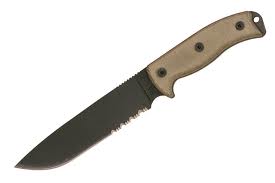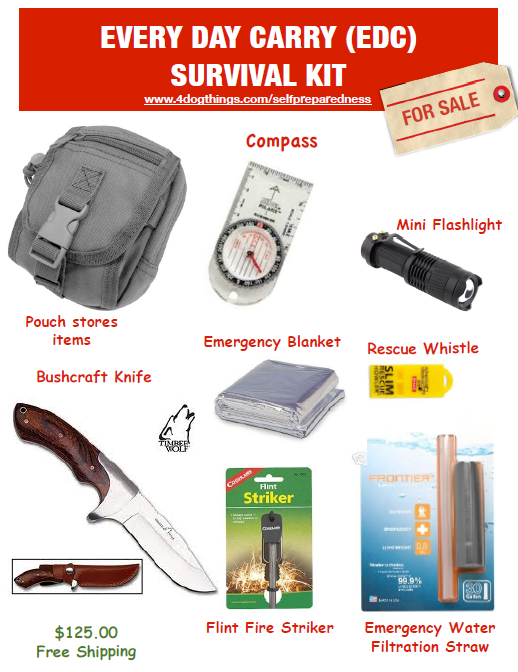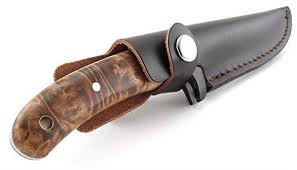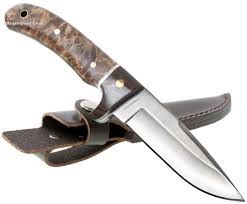
What do you know about survival knives? Is the first thing that comes to mind the “Rambo” like image of a wicked looking military style knife. Whether you know nothing about survival knives or are fairly familiar with them this blog will give you some insight on the subject. Survival knives are perhaps the single most important piece of equipment required in a survival situation. You may think of a knife as just something to cut, hunt, prepare food, or defend yourself with; however they are in fact a multi purpose tool used for much more. Look at the above photo. Which knife do you believe is the best survival knife? Ok keep that thought to yourself we will revisit it a little later.
Some of the many uses of a survival knife include digging, chopping down small trees, making a shelter, processing fire wood and skinning an animal. You may also need the knife to make tools by carving or shaping wood or to help start a fire. With a good survival knife you can chop, also known as baton down a small tree two to four inches in diameter. The knife will also allow you to split/process wood for a fire by making smaller pieces of wood that are drier towards the center. By chopping down branches or small trees you can also build a shelter to keep you out of the elements.
Ok, which knife in the picture did you choose as the better survival knife? While they both are survival knives and one is actually called a survival knife I would only want the one on the bottom with me in any survival situation. What then makes a survival knife a survival knife? There are many factors that contribute to a knife being considered a survival knife. One of the most important concerns in my opinion is the tang of the knife. The tang of a knife is the portion of the knife that the handle is attached to or is made up of. Again it is my opinion as well as many others that a knife with a full tang is best. A full tang means that the blade and the handle are forged from one solid piece of metal and the tang extends the entire length of the handle as shown in the picture below. In comparison as pictured below the “Rambo” style knife has a hollow handle which is kind of nifty for storing items however makes for a much weaker knife.


The tang portion of this knife only continues approximately one inch into the separate handle which is fastened together. This attachment point is the weakest link in the knife and the area most likely to fail during chopping or processing wood. While it is a good-looking knife and is very inexpensive at about $10 it is not suited for any serious long-term use. The full tang on the knife in the top photo is not going to break without serious purposeful abuse as it approximately 1/4 inch thick at the tang on this knife. A knife like this one can be purchased for $60 to $85 or so depending on where you purchase it. You don’t have to spend that much however as you can obtain other good full tang survival knives for $20 to $40 if you shop around. Just because a knife cost more doesn’t mean it is far superior, I would not spend the $200 and $300 for some of the available knives as mine will perform just as well.
The type of steel that the knife is made out of is a factor that some individuals consider when purchasing a survival knife. There are two basic types of steel that the knives are generally made with they are Stainless steel and carbon steel. Stainless steel blades can last a long time without rusting however according to some people they do not hold an edge as long as carbon steel blades. Carbon steel blades tend to hold an edge longer but rust faster although you would need to leave it out in the elements and not take care of it for it to rust fast.
Another consideration when shopping for a good survival knife is whether or not you prefer a straight-edged blade or a serrated blade. The straight-edged blades tend to be better for chopping and are easier to sharpen. Serrated blades tend to cut through rope and other materials easier but typically require a special sharpener. You can see the difference between the two types of blades in the photos below.


Notice that the serrated blade is only partially serrated which is typical of the majority of the serrated survival knives available. You can actually still chop and process wood with the partially serrated knife if you use the forward straight blade portion of the knife. The drawback to this is that you wont have as much of the blade to strike with a stick so you will not be able to process as thick of wood as a straight edge.
The length of most survival blades is from six to twelve inches however anything over ten inches or so in my opinion is not necessary unless you need something more like a machete for cutting your way through vegetation. The blade length does need to be long enough to allow you to chop through wood thoroughly.








